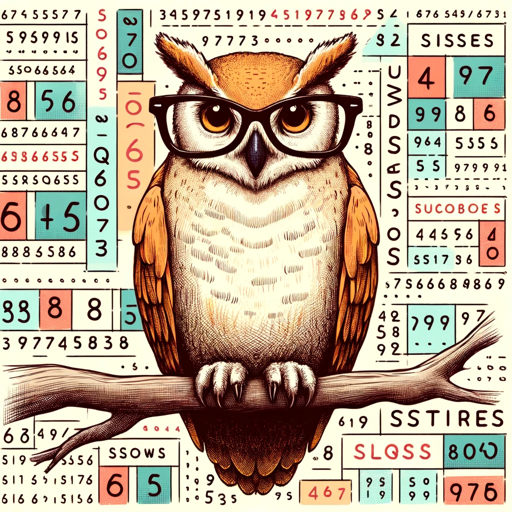
自動マインドマップ作成 - automatic mind map creation tool

AI-powered tool for automated mind maps and diagrams
マインドマップのサンプルを作成してください。
フローチャートのサンプルを作成してください。
シーケンス図のサンプルを作成してください。
ガントチャートのサンプルを作成してください。
Get Embed Code
Introduction to 自動マインドマップ作成
自動マインドマップ作成 is a specialized AI tool designed to assist users in creating visual diagrams such as mind maps, flowcharts, sequence diagrams, and Gantt charts. These diagrams are generated automatically based on user input and are useful for organizing complex information into structured, visual formats. The core purpose of 自動マインドマップ作成 is to streamline the process of diagram creation, enabling users to focus on conceptualization rather than manual drawing. The design is particularly useful for brainstorming, project planning, system design, and visualizing processes in both professional and educational contexts. For example, a project manager can input key project milestones and dependencies, and 自動マインドマップ作成 will generate a Gantt chart showing the timeline and task relationships automatically. Similarly, a student can enter a set of ideas for an essay, and the tool will return a mind map to help structure those ideas logically. Powered by ChatGPT-4o。

Key Functions of 自動マインドマップ作成
Mind Map Creation
Example
A user inputs a topic like 'Renewable Energy' with subtopics such as 'Solar Power,' 'Wind Energy,' and 'Hydropower,' and the tool automatically generates a hierarchical mind map showing these concepts and their relationships.
Scenario
This function is useful for individuals or teams brainstorming new ideas or organizing information into structured formats. For example, a business consultant preparing a client presentation on market strategies might use it to visually map out ideas and strategies to present to stakeholders.
Flowchart Generation
Example
A software developer provides a series of steps involved in a login process, including 'User enters credentials,' 'System validates input,' and 'Access is granted or denied.' The tool produces a flowchart showing the logical sequence of operations.
Scenario
This function is ideal for system engineers, process designers, and business analysts who need to visually map workflows, decision trees, or processes. For instance, an operations manager can input the steps of an order fulfillment process and receive a flowchart showing each phase of the operation.
Sequence Diagram Creation
Example
A user inputs the interactions between a customer, an e-commerce system, and a payment gateway during a purchase. The tool generates a sequence diagram showing the flow of messages between these entities.
Scenario
This is particularly beneficial for software architects and developers who need to design and document system interactions. In an API development scenario, a sequence diagram can help visualize how data is passed between different components of the system.
Gantt Chart Generation
Example
A project manager enters tasks such as 'Research,' 'Development,' and 'Testing,' along with their respective deadlines and dependencies. The tool generates a Gantt chart displaying the project timeline and task progressions.
Scenario
This is critical for project management, where tracking timelines, deadlines, and dependencies is essential. Teams working on product development, for example, can utilize this feature to ensure that tasks are completed in a timely and organized manner, with a clear view of task relationships.
Target User Groups for 自動マインドマップ作成
Project Managers
Project managers can use 自動マインドマップ作成 to create Gantt charts, flowcharts, and mind maps that visualize project timelines, task dependencies, and resource allocation. This helps in planning, monitoring, and communicating project progress with teams and stakeholders.
Business Analysts
Business analysts benefit from using the tool to create process flowcharts and system diagrams. These visuals can simplify the understanding of complex business processes, helping analysts document and communicate system workflows or process improvements clearly.
Educators and Students
Educators and students can use mind maps and flowcharts to organize ideas, create lesson plans, or structure academic research. Students, for instance, can better visualize complex subjects like history or science, while educators can develop engaging visual aids for teaching.
Software Engineers and Architects
Software engineers and system architects can take advantage of sequence diagrams and flowcharts to map out system designs, interactions, and workflows. This makes it easier to document and communicate the behavior of software components or APIs within development teams.
Consultants
Consultants often need to convey strategies or solutions to clients in a clear, organized manner. By using mind maps or flowcharts, consultants can break down complex concepts or strategies into manageable, visual formats that are easier to understand and discuss.

How to use 自動マインドマップ作成
1
Visit yeschat.ai for a free trial without login, also no need for ChatGPT Plus.
2
Familiarize yourself with the interface, which allows you to generate mind maps, flowcharts, and more by providing clear inputs or choosing predefined templates.
3
Choose the specific tool you want to use (e.g., mind map, flowchart), then provide the necessary details such as topics, relationships, or sequences.
4
The tool will automatically process your input and render a visual diagram that you can edit, download, or share as needed.
5
For optimal results, make sure your inputs are well-structured and organized, keeping complex topics broken into smaller nodes or elements.
Try other advanced and practical GPTs
Surreal Sketcher
Craft Dream-like Visions with AI

Dalimoji
Create Surreal Emojis with AI

Jinghu Healer
Empowering Mental Health with AI

销售顾问
Elevating Strategies with AI Insight

Fliki.ai Caption Helper
Craft engaging stories with AI-powered captions

Floki
Empowering analysis and development with AI

SQL Companion
AI-powered SQL Management Made Easy

SQL Helper
AI-powered SQL support for cloud environments

Entree Nutrients 엔트리 백과사전
Power Your Health with AI-Driven Insights

생기부 세특 영어 엔진
Craft Your Academic Excellence with AI

코딩왕 - 프롬프트 엔지니어링
Elevating AI Interactions with Precision

Art Mentor
Enhance Your Art with AI

Common Questions about 自動マインドマップ作成
What is the primary function of 自動マインドマップ作成?
The main function is to automatically generate mind maps, flowcharts, and sequence diagrams based on the user’s input, allowing for quick and easy visual representation of ideas or processes.
Do I need a premium subscription to use the tool?
No, the tool offers a free trial without the need for login or a ChatGPT Plus subscription. It’s accessible for anyone looking to generate diagrams quickly.
Can I customize the mind maps after they are generated?
Yes, the tool allows you to edit, modify, and expand on the generated visual maps before downloading or sharing them.
What formats can I export the diagrams to?
The diagrams can typically be exported in popular image formats like PNG, JPEG, and SVG, ensuring compatibility with presentations and documents.
What kind of inputs are required to generate a mind map?
You can input structured information such as bullet lists, hierarchical data, or sequences, which the tool will automatically process into a visual mind map or diagram.